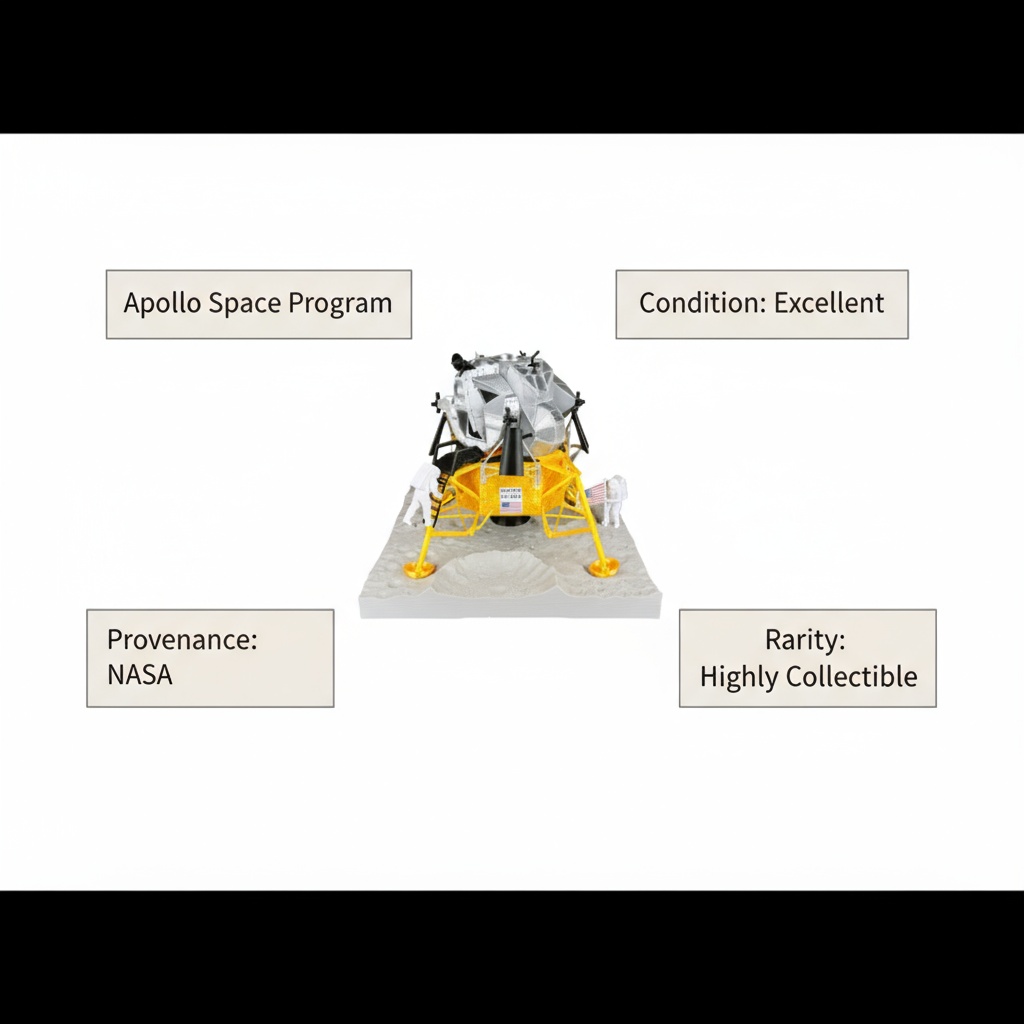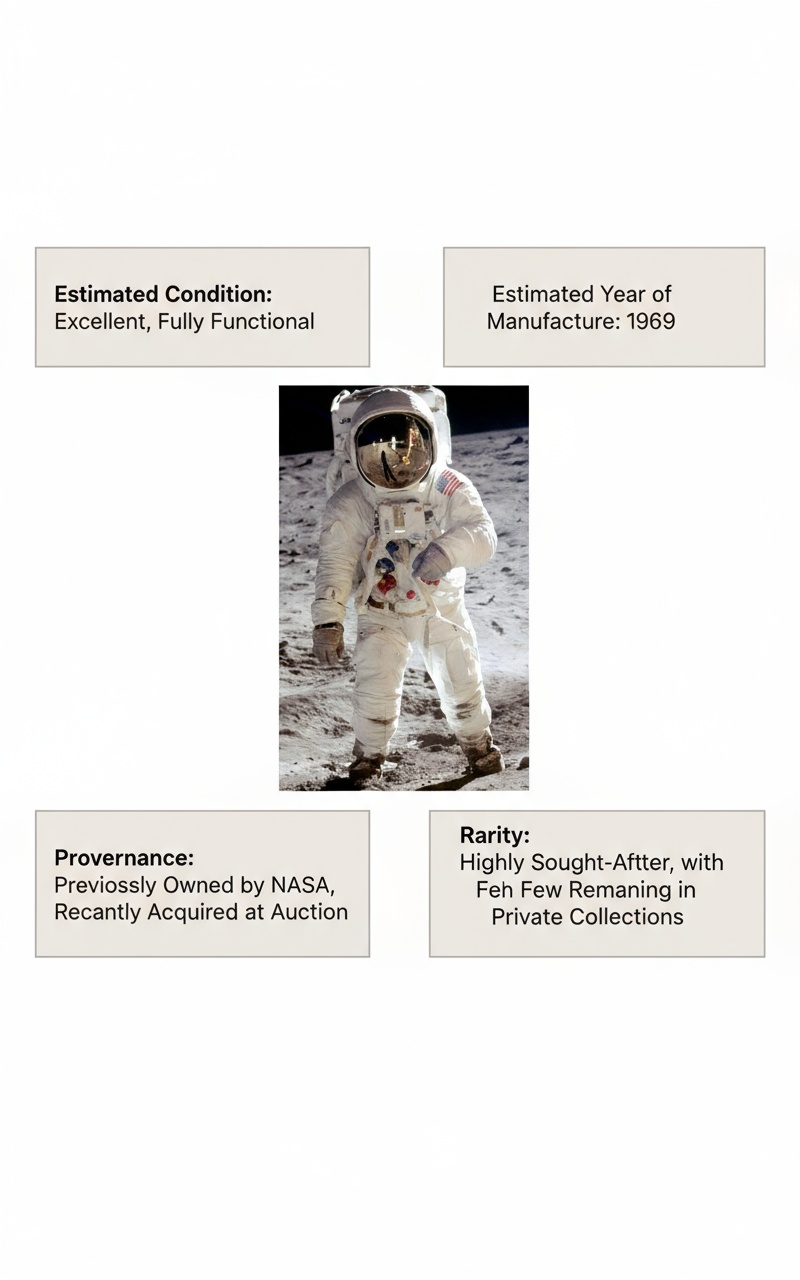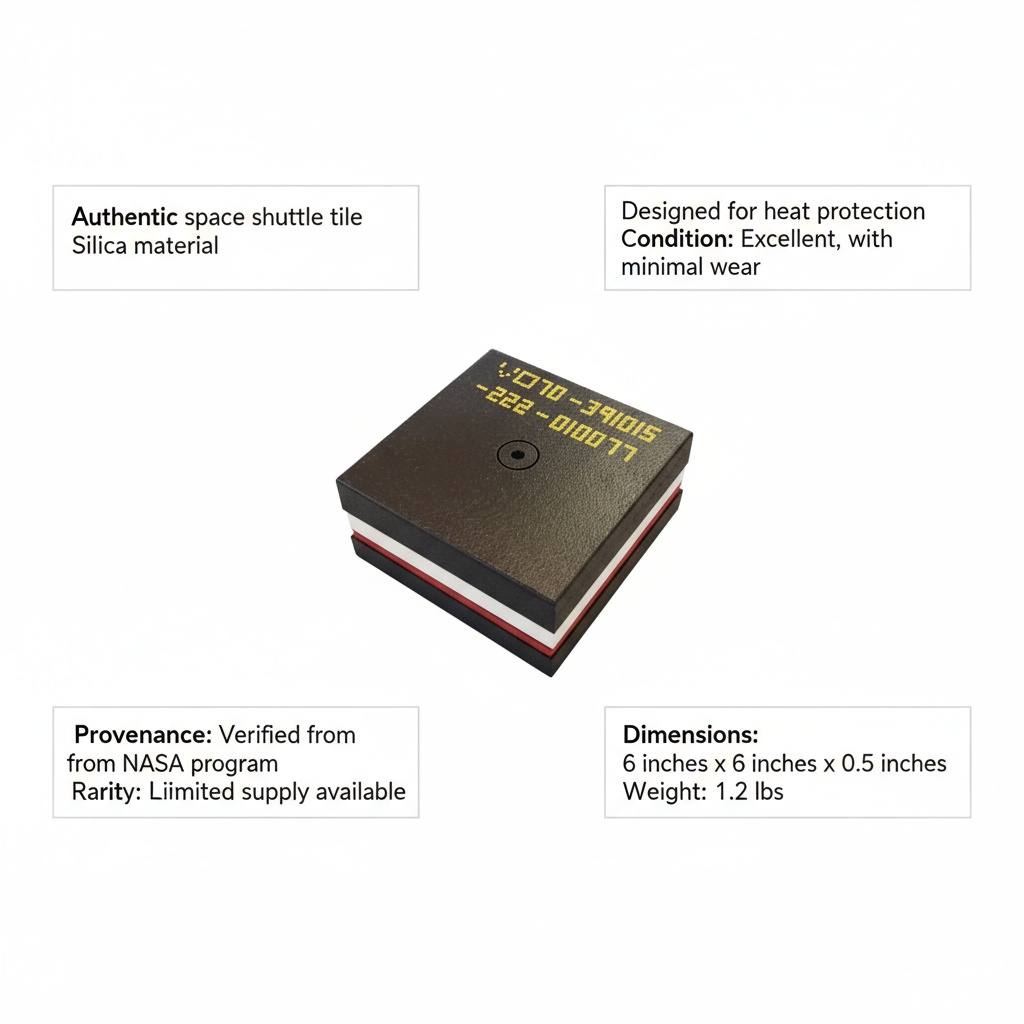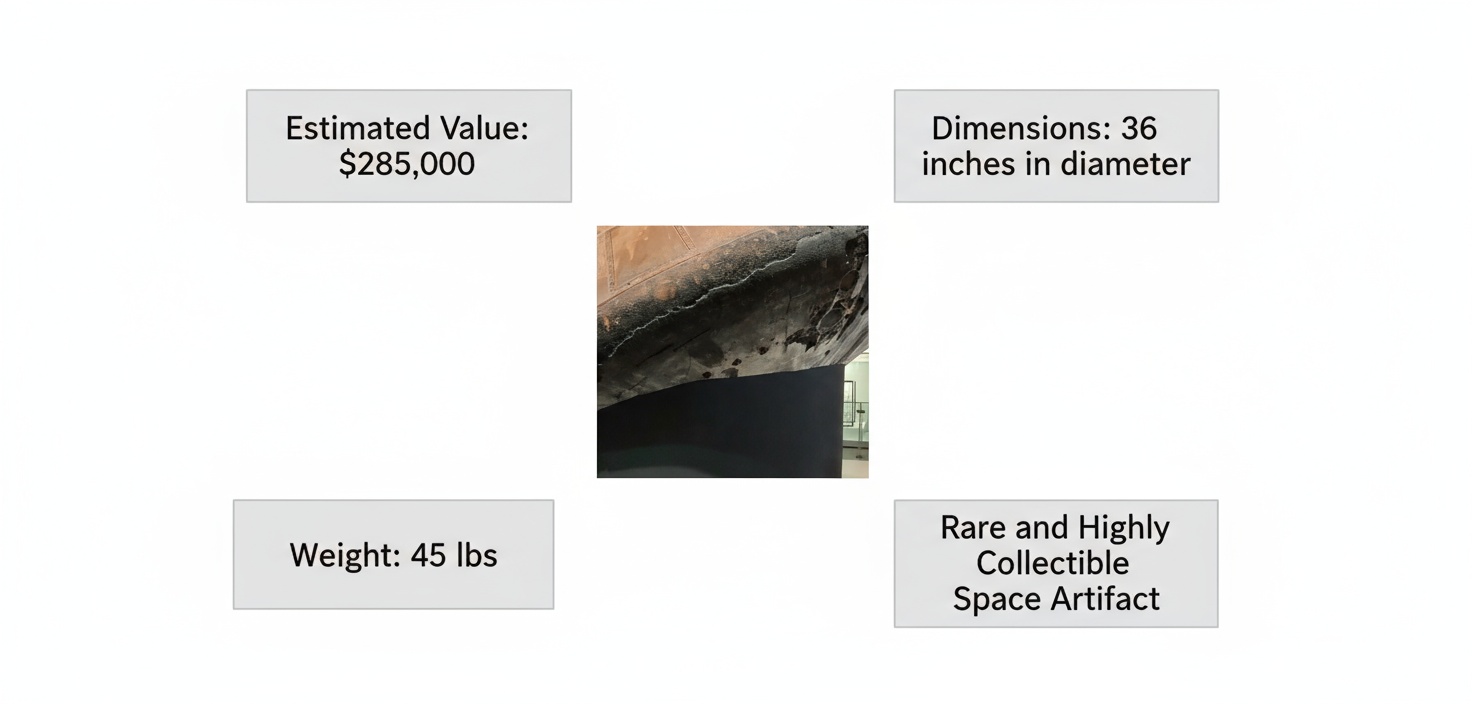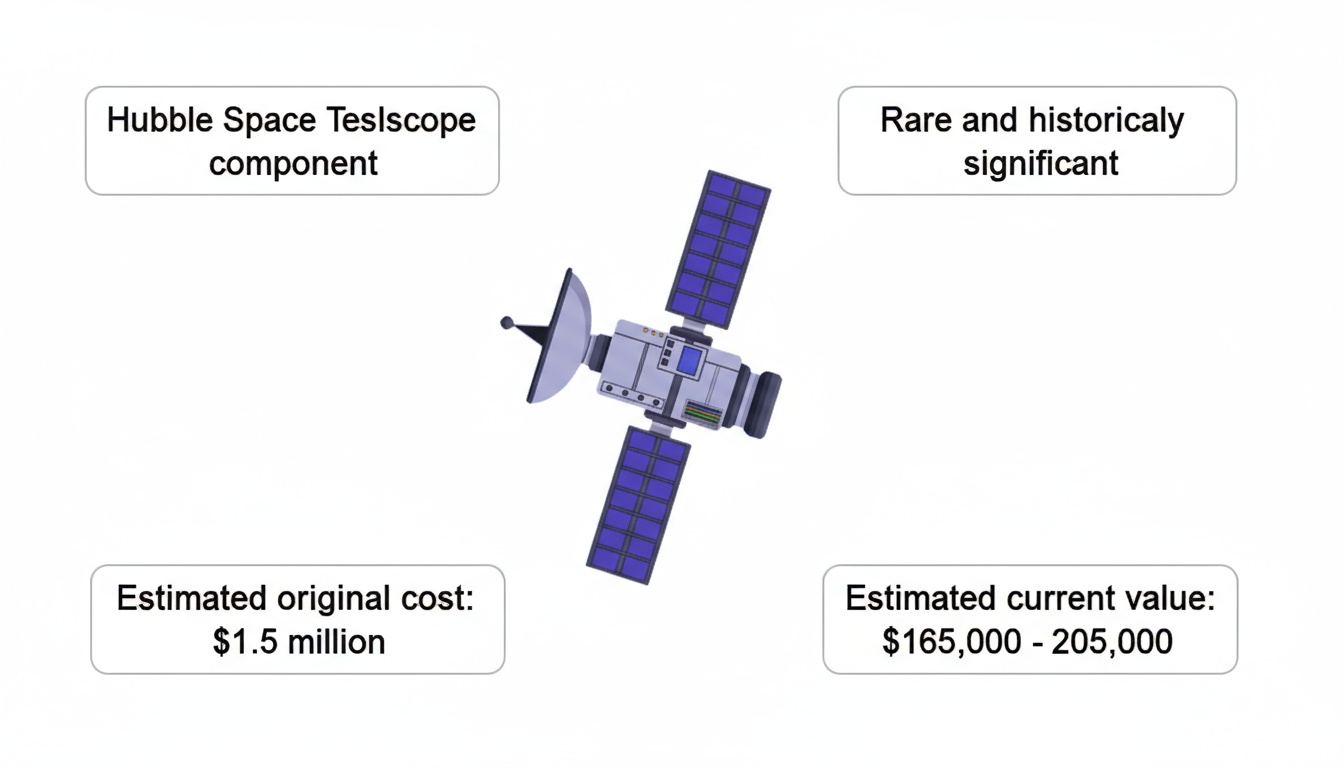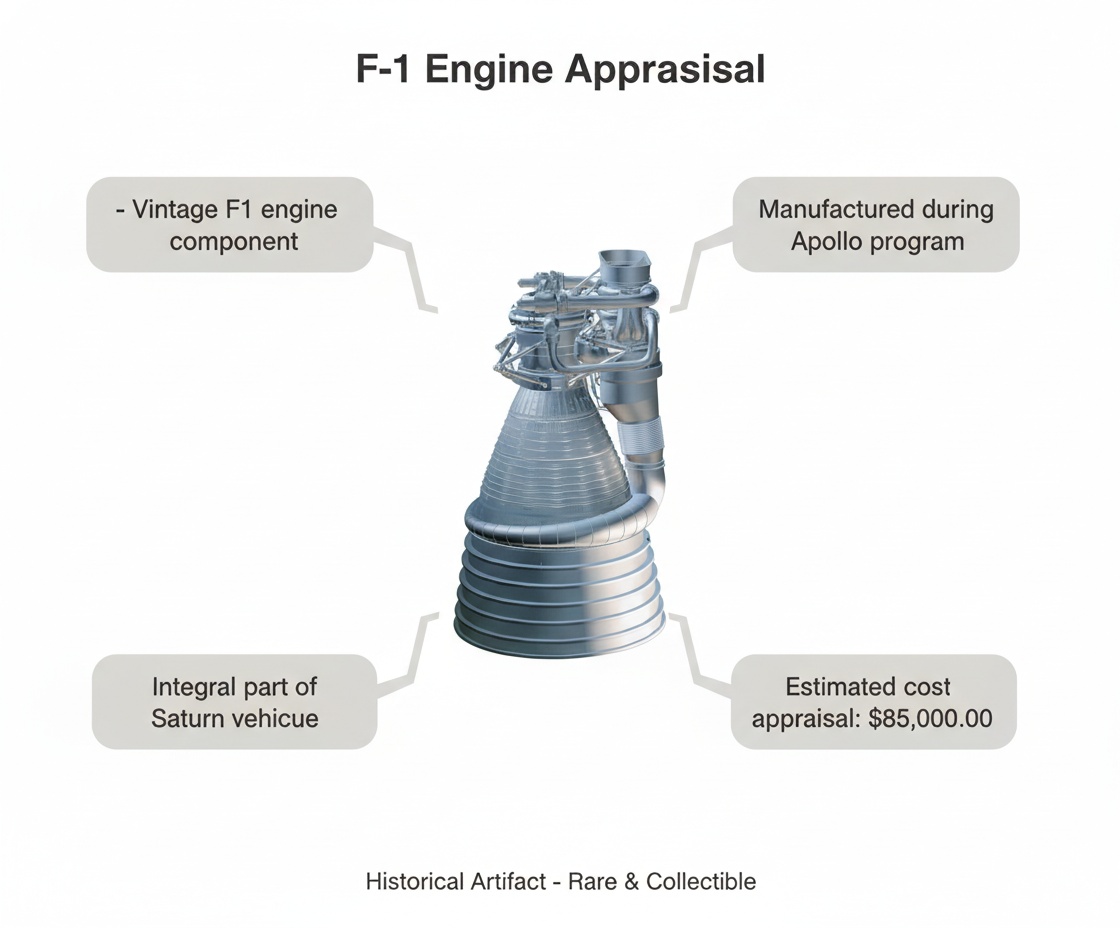<h1>Understanding the Value of Lunar Module Components</h1>
<p>Lunar module components represent some of the most tangible and historically significant artifacts from humanity's greatest adventure—the Apollo space program. Whether you're a serious collector, a museum curator, or someone who's recently inherited or acquired one of these remarkable pieces, understanding what drives value and how to properly appraise it is essential.</p>
<h2>What Is a Lunar Module Component?</h2>
<p>The Lunar Excursion Module, commonly referred to as the <strong>LEM</strong>, was the spacecraft that carried astronauts from lunar orbit down to the Moon's surface during the Apollo missions. Each <strong>Lunar Module</strong> was an intricate piece of aerospace engineering, comprised of hundreds of individual components—from guidance systems and fuel tanks to landing legs and communication equipment.</p>
<p>When you refer to a "lunar module component," you're talking about a specific part of this engineering marvel. These can range from structural panels and valve assemblies to instrumentation and housings. Some of these parts actually traveled to the Moon and back (flight hardware), while others served as training mock-ups or spare components.</p>
<div class="callout tip"><p><strong>Understanding Your LEM Part</strong></p>
<p>Not all lunar module components are equally valuable. Flight hardware—parts that actually went to the Moon—commands dramatically higher prices than training replicas or spare components, sometimes differing by hundreds of thousands of dollars.</p></div>
<h2>What Determines the Value of a Lunar Module Component?</h2>
<p>Several interconnected factors influence whether your lunar module component is worth a few thousand dollars or hundreds of thousands. Understanding these drivers helps you recognize why professional appraisal is so important for accurate valuation.</p>
<h3>Flight History and Authentication</h3>
<p>The most significant value driver is <strong>documented flight history</strong>. Did your component actually travel to the Moon? Was it part of the Apollo 11, Apollo 13, or another historic mission? Flight-tested hardware commands premium prices because of its undeniable connection to one of humanity's greatest achievements.</p>
<p>Authentication requires more than a good story. You'll need verifiable documentation—NASA paperwork, mission manifests, chain-of-custody records, or auction house provenance. Experts examine physical evidence too: material composition, wear patterns, serial numbers, and construction techniques all support (or refute) flight history claims.</p>
<div class="callout note"><p><strong>Know Your Provenance</strong></p>
<p>Provenance—the documented history of your item's ownership and whereabouts—is your most powerful asset when selling or insuring a lunar module component. Without it, even genuine parts can lose 50% or more of their potential value.</p></div>
<h3>Rarity and Component Type</h3>
<p>Not all parts are equally scarce. A redundant sensor housing is less rare than a critical guidance system component. Mission-specific parts—those manufactured for a particular Apollo mission—often carry higher value than generic spare components. Items associated with famous missions like Apollo 11 or Apollo 13 tend to be more sought-after than those from later, less publicized missions.</p>
<h3>Physical Condition</h3>
<p>Condition matters tremendously. A lunar module component in excellent condition, with minimal wear and original finishes intact, commands a premium over damaged or heavily oxidized parts. Collectors and museums value authenticity that shows through in the item's state of preservation.</p>
<p>The material itself also tells a story—most components were crafted from <strong>aluminum alloy</strong> to meet NASA's strict weight and performance requirements. Original finishes, maker's marks, and serial numbers should all be intact and visible.</p>
<h3>Astronaut Association</h3>
<p>If your lunar module component has documented association with a famous astronaut—especially someone like Neil Armstrong, Buzz Aldrin, or Jim Lovell—value increases substantially. Even indirect connections (an item given by an astronaut, worn during training with a specific astronaut, or displayed at a memorabilia auction) can elevate pricing.</p>
<h3>Supporting Documentation and Paperwork</h3>
<p>Clear, verifiable documentation forms the foundation of value. NASA records, mission photographs, auction house catalogs, museum accession papers, and even contemporary news coverage all strengthen your item's story and its market position. Without documentation, even authentic pieces face skepticism and reduced offers.</p>
<h2>How Much Is a Lunar Module Component Worth?</h2>
<p>The value range for lunar module components is broad—so broad, in fact, that accurate pricing demands professional expertise.</p>
<p><strong>Non-flight or reproduction parts</strong> (training mock-ups, spare components, or replicas) typically range from a few hundred dollars to a few thousand. These items appeal to enthusiasts and educational institutions but lack the prestige and scarcity of actual flight hardware.</p>
<p><strong>Authenticated flight hardware</strong>, especially from significant Apollo missions, can reach <strong>$450,000 to $550,000</strong> or higher, depending on the factors we've discussed. Particularly rare components or those with exceptional astronaut provenance have sold for well above that range at major auction houses.</p>
<p>The middle ground includes flight-qualified parts (manufactured to flight specifications but never actually flown), ground support equipment, and training articles with clear NASA documentation. These often range from $10,000 to $100,000.</p>
<p>The key takeaway? Value depends on the specific combination of flight history, rarity, condition, documentation, and current collector demand. A professional appraisal is the only reliable way to determine where your particular component falls on this spectrum.</p>
<div class="callout tip"><p><strong>Get It in Writing</strong></p>
<p>Never rely on verbal estimates or casual opinions when dealing with items in the $100,000+ range. A <strong>USPAP-compliant appraisal</strong> provides the certified, defensible valuation you need for insurance, sales negotiations, or estate planning.</p></div>
<h2>Authenticity, Legal Status, and Authentication</h2>
<p>Before you invest in appraising or selling a lunar module component, it's wise to address authenticity and legal ownership head-on.</p>
<h3>How to Verify Authenticity</h3>
<p><strong>Start with paperwork.</strong> Gather every document associated with your item: purchase receipts, auction catalogs, photographs of the item in its original context, any NASA documentation, and records of how you or previous owners acquired it.</p>
<p>Next, consult the experts. Specialized appraisers use several authentication techniques:</p>
<ol>
<li><strong>Physical examination</strong> — Serial numbers, construction methods, material composition, and manufacturing marks are compared against known examples.</li>
<li><strong>Material analysis</strong> — In some cases, metallurgical testing confirms whether materials match NASA specifications from the relevant era.</li>
<li><strong>Comparison to known examples</strong> — Museum collections and well-documented private collections provide reference points for authentic components.</li>
<li><strong>Chain-of-custody verification</strong> — Tracing ownership through auction records, museum accessions, or NASA surplus sales creates a credible narrative.</li>
</ol>
<p>If you suspect you have flown hardware, obtaining a specialist appraisal before any public announcement or sale is prudent. Independent authentication from a recognized aerospace collectibles expert strengthens your position considerably.</p>
<h3>Legal Considerations for Space Artifacts</h3>
<p>Here's where things get complicated: <strong>not all lunar module components are legally available for private sale.</strong></p>
<p>Some Apollo artifacts remain government property, particularly components that were part of spacecraft hardware or scientific equipment. Other pieces entered private hands through legitimate channels—NASA surplus auctions, gifts to astronauts, or documented private sales.</p>
<p>Your legal right to own and sell your component depends entirely on how it was acquired and documented. Before listing an item for sale or displaying it publicly, you should:</p>
<ol>
<li>Research whether the specific item type was ever released to private hands</li>
<li>Verify your chain of ownership through all previous owners</li>
<li>Check for any export restrictions or NASA hold status</li>
<li>Consult an attorney experienced with space artifacts or contact NASA's historical office directly if you're uncertain</li>
</ol>
<div class="callout important"><p><strong>Legal First, Appraisal Second</strong></p>
<p>Selling a space artifact without confirming legal ownership can result in confiscation, fines, or worse. If your lunar module component's provenance includes any government acquisition, seek legal guidance before pursuing an appraisal or sale.</p></div>
<h2>Why Professional Appraisal Matters for Lunar Module Components</h2>
<p>You might wonder: "Can't I just look up prices online?" The short answer is no—not for items this rare and historically significant.</p>
<h3>The Challenges of DIY Valuation</h3>
<p>Online comparables often don't exist for truly unique items. You might find one or two auction results from a decade ago that seem related to your component, but auction prices fluctuate based on buyer interest, market conditions, and the specific details of that particular transaction. Using a five-year-old result to value your current item can be wildly inaccurate.</p>
<p>Additionally, the space memorabilia market is relatively thin. Unlike coins, stamps, or fine art—where thousands of comparable sales occur annually—authenticated lunar module flight hardware sells infrequently. This scarcity makes traditional comparables-based appraisal challenging.</p>
<h3>What a Credentialed Appraiser Brings</h3>
<p>A professional appraiser specializing in aerospace collectibles or memorabilia brings several advantages:</p>
<ul>
<li><strong>Expertise in authentication</strong> — They know the telltale signs of genuine Apollo hardware versus skilled replicas.</li>
<li><strong>Access to specialist networks</strong> — They can consult with NASA historians, museum curators, or other specialists when needed.</li>
<li><strong>Market knowledge</strong> — They track sales, understand current collector demand, and recognize emerging trends in space memorabilia pricing.</li>
<li><strong>USPAP compliance</strong> — Appraisals follow the <strong>Uniform Standards of Professional Appraisal Practice</strong>, making them legally defensible for insurance, estate, or sales purposes.</li>
<li><strong>Detailed documentation</strong> — The appraisal report becomes part of your item's provenance, strengthening future sales or insurance claims.</li>
</ul>
<p>AppraiseItNow connects you with credentialed specialists certified by organizations like the <strong>International Society of Appraisers</strong>, the <strong>American Society of Appraisers</strong>, and the <strong>Appraisers Association of America</strong>. These professionals understand the intersection of engineering, history, and value that makes space artifacts so distinctive.</p>
<h2>Other Space-Related Assets Worth Appraising</h2>
<p>If you own a lunar module component, you may also have interest in related aerospace collectibles and equipment. Understanding how these connect to the broader <a href="/types/memorabilia-and-collectibles">memorabilia and collectibles market</a> can help you build a comprehensive collection strategy.</p>
<p>Collectors often pursue:</p>
<ul>
<li><strong>Mission memorabilia</strong> — Items directly used or autographed by astronauts</li>
<li><strong>Technical documentation</strong> — Flight plans, checklists, and NASA blueprints</li>
<li><strong>Spacesuits and personal equipment</strong> — Actual suits or tools used in space</li>
<li><strong>Other spacecraft components</strong> — Pieces from Command Modules, Service Modules, or other vehicles</li>
<li><strong>Launch and mission photographs</strong> — Professionally documented images with provenance</li>
</ul>
<p>Each of these asset categories has a unique market and requires specialized appraisal knowledge. If you're building a space history collection, consider working with an appraiser who understands the entire ecosystem of aerospace artifacts and their interconnected valuations.</p>
<h2>Getting Your Lunar Module Component Appraised</h2>
<p>When you're ready to move forward with a professional appraisal, here's how to prepare:</p>
<p><strong>Gather your documentation.</strong> Collect every photo, receipt, letter, or document related to your component's acquisition and ownership.</p>
<p><strong>Document the physical item.</strong> Take clear photographs of all sides, serial numbers, markings, and any distinguishing features. Include photos showing the overall condition and any wear or patina.</p>
<p><strong>Prepare a detailed description.</strong> Write down dimensions, weight, material, color, condition notes, and any identifying marks. This information speeds the appraisal process significantly.</p>
<p><strong>Submit through AppraiseItNow.</strong> Our platform allows you to upload photos, descriptions, and documentation securely. You'll be connected with a credentialed specialist experienced in aerospace artifacts and space memorabilia.</p>
<div class="callout tip"><p><strong>Speed the Process</strong></p>
<p>The more detailed and organized your submission, the faster your appraisal can be completed. Include photos from multiple angles, accurate measurements, and any supporting paperwork you have on hand.</p></div>
<p>A thorough appraisal report will document the component's physical characteristics, analyze its provenance, compare it to recent market sales (where applicable), and provide a detailed valuation supported by professional reasoning.</p>
<hr />
<div class="callout note"><p><strong>Key Takeaway</strong></p>
<p>Whether you're selling, insuring, or simply looking to understand what you own, a professional appraisal of your lunar module component is an investment in clarity and confidence. It transforms uncertainty into a certified, defensible valuation backed by specialized expertise and adherence to the highest professional standards. <strong>AppraiseItNow</strong> connects you with credentialed appraisers who understand the unique intersection of aerospace engineering, historical significance, and collector value that makes lunar module components truly irreplaceable pieces of humanity's space exploration legacy.</p></div>

